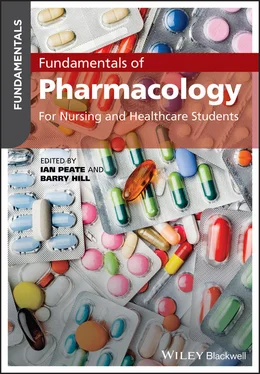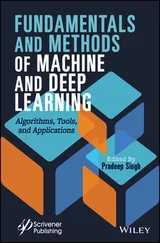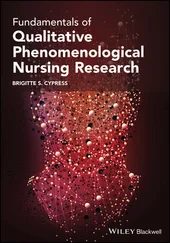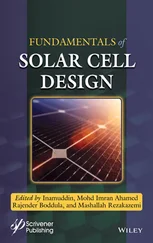20 Herring, J. (2018). Medical Law and Ethics. Oxford: Oxford University Press.
21 Human Rights Act (1998). Human Rights Act. www.legislation.gov.uk/ukpga/1998/42/contents(accessed 19 September 2019).
22 Human Tissue Act (2004). Human Tissue Act. www.legislation.gov.uk/ukpga/2004/30/contents(accessed 19 September 2019).
23 Joint Formulary Committee (2019). British National Formulary. https://bnf.nice.org.uk(accessed October 2019).
24 Kelly, D. and Roedderts, E. (2008). Racial cognition and the ethics of implicit bias. Philosophy Compass 3 (3): 522–540.
25 Lang, K.R., Dupree, C., Kon, A. et al. (2016). Calling out implicit bias as a harm in pediatric care. Cambridge Quarterly of Healthcare Ethics 25: 540–552.
26 Medicines & Healthcare products Regulatory Agency (2012). Good Clinical Practice Guide. London: TSO.
27 Medicines for Human Use (Clinical Trials) Regulations (2004). Medicines for Human Use. www.legislation.gov.uk/uksi/2004/1031/contents/made(accessed 19 September 2019).
28 Mental Capacity Act (2005). Mental Capacity Act. www.legislation.gov.uk/ukpga/2005/9/contents(accessed 19 September 2019).
29 Merino, Y., Adams, L., and Hall, W.J. (2018). Implicit bias and mental health professionals: priorities and direction for research. Psychiatric Services 69 (6): 723–725.
30 National Health Service Improvement (2019). Clinical negligence and litigation. https://improvement.nhs.uk/resources/clinical‐negligence‐and‐litigation(accessed 4 September 2019).
31 National Institute of Health and Care Excellence (2018). Guideline 109 Urinary Tract infection (lower): antimicrobial prescribing. www.nice.org.uk/guidance/ng109(accessed 4 September 2019).
32 Nuremberg Code (1947). Trials of war criminals before the Nuernberg [sic] military tribunals volume 2 “The medical case”. https://www.loc.gov/rr/frd/Military_Law/pdf/NT_war‐criminals_Vol‐II.pdf(accessed 19 September 2019).
33 Nursing & Midwifery Council (2015). Standards for medicines management. http://NMC.org.uk.
34 Nursing & Midwifery Council (2018). The Code: Professional standards of practice and behaviour for nurses, midwives and nursing associates. www.nmc.org.uk/globalassets/sitedocuments/nmc‐publications/nmc‐code.pdf(accessed 19 September 2019).
35 Nursing & Midwifery Council and General Medical Council (2015). Openness and honesty when things go wrong: the professional duty of candour. https://tinyurl.com/zpdk7mk(accessed July 2020).
36 Ozdemir, B.A., Karthikesalingam, A., Sinha, S. et al. (2015). Research activity and the association with mortality. PLoS One 10 (2): e0118253. https://doi.org/10.1371/journal.pone.0118253.
37 Pellegrino, E.D. (1988). For the Patient's Good: The Restoration of Beneficence in Health Care. Oxford University Press.
38 Public Health England (2019). Measles: guidance, data and analysis available at: https://www.gov.uk/government/collections/measles‐guidance‐data‐and‐analysis#epidemiology(accessed 12 September 2019).
39 Puddifoot, K. (2017). Dissolving the epistemic/ethical dilemma over implicit bias. Philosophical Explorations 20 (1): S73–S93.
40 Royal Pharmaceutical Society and Royal College of Nursing (2019). Professional guidance on the administration of medicines in healthcare settings. https://www.rpharms.com/Portals/0/RPS%20document%20library/Open%20access/Professional%20standards/SSHM%20and%20Admin/Admin%20of%20Meds%20prof%20guidance.pdf?ver=2019‐01‐23‐145026‐567(accessed 19 September 2019).
41 Samanta, J. and Samanta, A. (2011). Medical Law. Basingstoke: Palgrave Macmillan.
42 Stewart, M. and Brown, J. (2001). Patient‐centredness in medicine. In: Evidence‐Based Patient Choice (eds. A. Edwards and G. Elwyn). London: Oxford University Press.
43 Stone, J. and Moskowitz, G.B. (2011). Non‐conscious bias in medical decision‐making: what can be done to reduce it. Medical Education 45: 768–776.
44 Studdert, D., Mello, M., Sage, W. et al. (2005). Defensive medicine among high‐risk specialist physicians in a volatile malpractice environment. JAMA: The Journal of the American Medical Association 293: 2609–2617.
45 Velasquez, M., Andre C., Shanks, S. et al (1988). Ethics and virtue. https://www.scu.edu/ethics/ethics‐resources/ethical‐decision‐making/ethics‐and‐virtue(accessed 19 September 2019).
46 World Medical Association (2008). World Medical Association Declaration of Helsinki. Ethical Principles for Medical Research Involving Human Subjects. https://www.wma.net/wp‐content/uploads/2016/11/DoH‐Oct2008.pdf(accessed 19 September 2019).
47 Williamson, C. (2010). Towards the Emancipation of Patients. Patients' Experiences and the Patient Movement. Bristol: Policy Press.
1 Useful reads: Medical Protection www.medicalprotection.org/uk/hub/ethics.
2 Specialist Pharmacy Service (2018). Medicines Matters: A guide to the prescribing, supply and administration of medicines (in England) (2018). https://www.sps.nhs.uk/wp‐content/uploads/2018/10/Medicines‐Matters‐september‐2018‐1.pdf
3 Royal Pharmaceutical Society and Royal College of Nursing (2019). Professional Guidance on the Administration of Medicines in Healthcare settings). https://www.rpharms.com/Portals/0/RPS%20document%20library/Open%20access/Professional%20standards/SSHM%20and%20Admin/Admin%20of%20Meds%20prof%20guidance.pdf?ver=2019‐01‐23‐145026‐567.
4 Royal Pharmaceutical Society (2018). Professional Guidance on the safe and secure handling of medicines. https://www.rpharms.com/recognition/setting‐professional‐standards/safe‐and‐secure‐handling‐of‐medicines/professional‐guidance‐on‐the‐safe‐and‐secure‐handling‐of‐medicines?welcome=true.
Multiple choice questions
1 Common Law is also known as:Criminal LawCase LawStatute LawAll of the above
2 Failure to act with reasonable care could result in healthcare staff being held responsible in which courts:Criminal CourtCivil CourtCivil and Criminal CourtAll of the above
3 What year did the Medicines Act become statute?196619671968None of the above
4 Utilitarian theory considers:The greatest good for the greatest numberYour duty of care takes priority over any other considerationsHow we ought to behave and seek relationshipsAll of the above
5 When adopting principle‐based ethics to guide your decision‐making, where do you need to gather the facts from?From all the stakeholders involved within the scenarioFrom what is already knownFrom other facts that are relevant from other scenariosAll of the above
6 Sensitive topics such as abortion can lead to the practitioner having a ___________ dilemma:EthicalClinicalLegalAll of the above
7 Implicit means:HiddenObviousAvailableExplicit
8 Elements of implicit bias include:StereotypesPrejudicesStereotypes and prejudicesImpartialities
9 Healthcare professionals harbor a __________ level of implicit bias as the general population:LowerHigherEqualNone of the above
10 The influences of implicit bias on the practitioner's professional behavior include:Making the client feel uncomfortableHelping them access servicesCorrect diagnoses and treatmentPatient concordance
11 . What is the Bolam test?A test to assess patients' capacityThe opinion of a professional body as to whether the action was accepted practiceAn assessment of competency of a patient under 16All of the above
12 Shared decision‐making:Is an approach to care that increases patient engagement in treatmentImproves patient engagement with care and treatmentReduces medico‐legal claimsAll of the above
13 What is distributive justice in relation to healthcare?The fair and equal distribution of health resourcesThe “postcode lottery”An assessment of patient needAll of the above
Читать дальше












